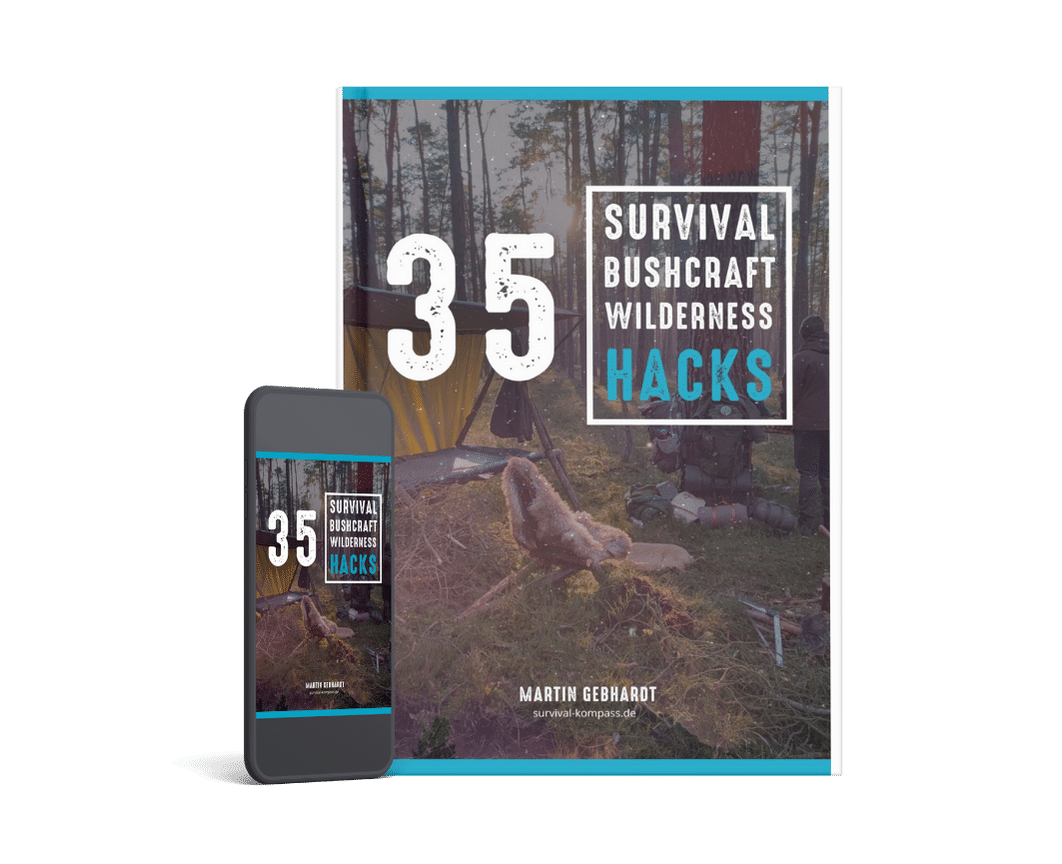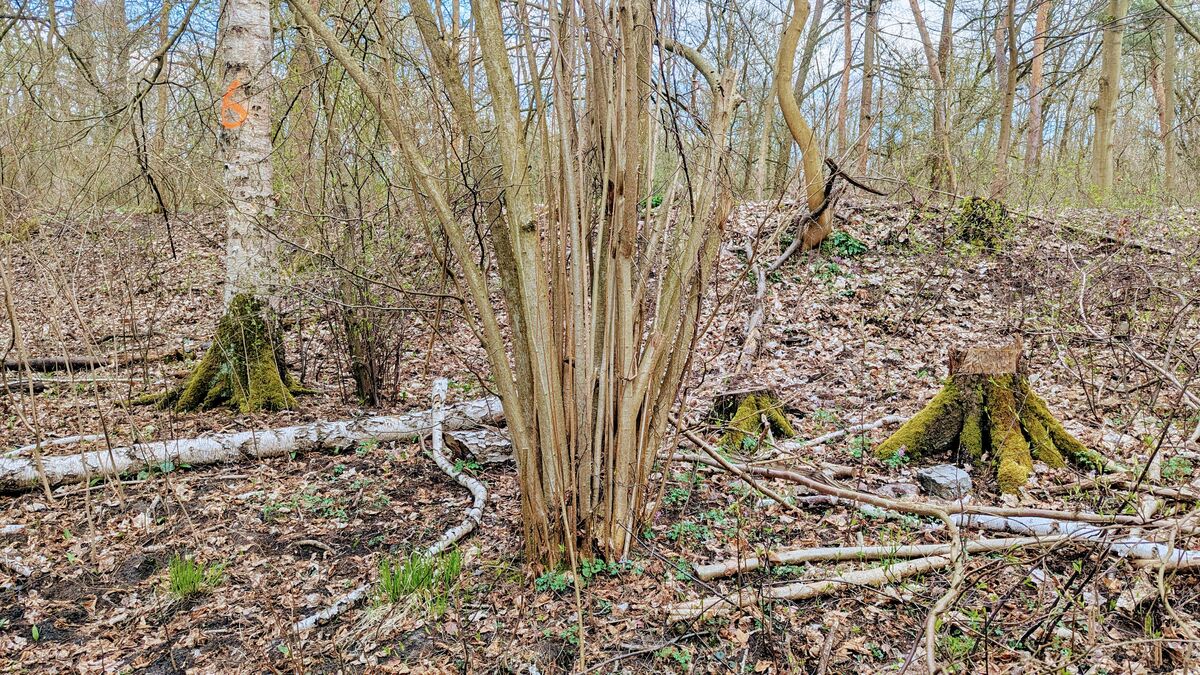
The hazel: your flexible friend for bushcraft & survival (more than just nuts!)
👉 The key facts from this guide
- The hazel is not only a supplier of delicious nuts – it is a super versatile shrub for bushcraft, survival, and nature education with flexible rods and nutritious fruits.
- The young, flexible shoots are perfect for weaving carrying baskets, fences, fish traps, and building shelters – real nature craftsmanship potential straight from the forest.
- Hazel wood is ideal for homemade tools such as fire drills, grilling skewers, simple bows, and bushcraft hammers – all from what you find on site.
- In an emergency, besides the well-known hazelnut, you can also eat male catkins and young leaves – thus making the hazel a true survival aid.
- It plays an important role in mythology, customs, and traditional use – divining rods, magic wands, and sustainable management included (keyword coppicing).
- When harvesting, the rule is: be respectful to nature, take only what you need, and recognize the hazel as a living teacher for observation, craftsmanship, and connection to nature.
If you wander through our native forests and hedges, the chance is huge that you will encounter it: the Common Hazel (Corylus avellana).
Many know them only for their delicious nuts in autumn, which we often have to share with the squirrels.
But for us wilderness educators, bushcrafters, and survival fans, the hazel is so much more! It is an incredibly versatile, robust, and often underestimated companion – a true Swiss army knife among shrubs.
Grab your knife (in a figurative sense, of course!) and let's discover why this unassuming shrub is an absolute must for your wilderness knowledge.
Profile: How to Identify the Hazel Safely
Before we get to the heart of the matter, we must, of course, be able to recognize them safely.
- Botanical name: Corylus avellana
- Family: Birch family (Betulaceae)
- Growth form: Usually a multi-stemmed shrub, rarely a small tree, typically grows 3–6 meters high, sometimes taller. Often grows bushy directly from the ground.
- Bark: Smooth, gray-brown on young shoots, often with light cork pores (lenticels). With age, it can become somewhat more fissured.
- Leaves: Round to heart-shaped, with a distinct tip. The edge is characteristically doubly serrated (looks like teeth on teeth). The leaf surface is slightly rough, the underside is softly hairy. They are alternately arranged on the branch.
- The most important thing for bushcrafters: The young shoots and rods are extremely flexible!

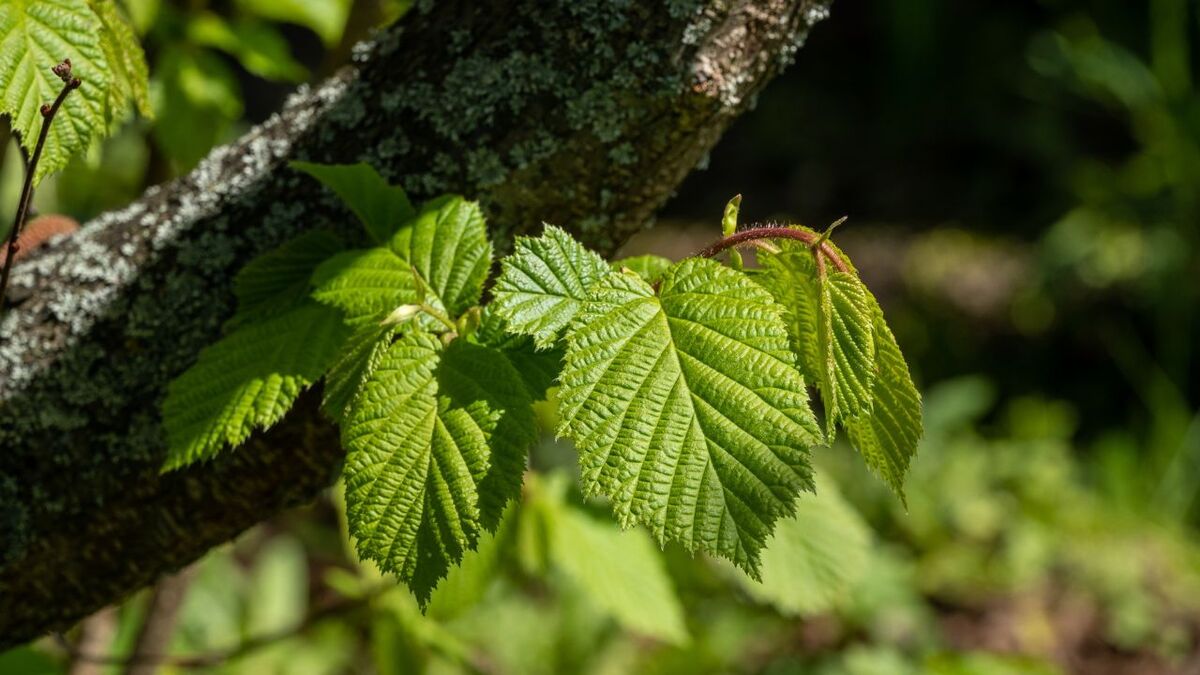
Male and Female: The Flowers of the Hazel
The hazel is an early bloomer and one of the first essential food sources for bees. It has separate male and female flowers on the same plant (monoecious):
- Male flowers: These are the long, yellow, sausage-shaped structures that hang on the branches even in winter and release their pollen into the wind in early spring (often February/March). These catkins are unmistakable.
- Female flowers: They are tiny and inconspicuous! They look like small buds, from which only a few bright red, thread-like stigmas peek out – like tiny brushes. You really have to look closely to spot them. After wind pollination, the hazelnuts develop from them.
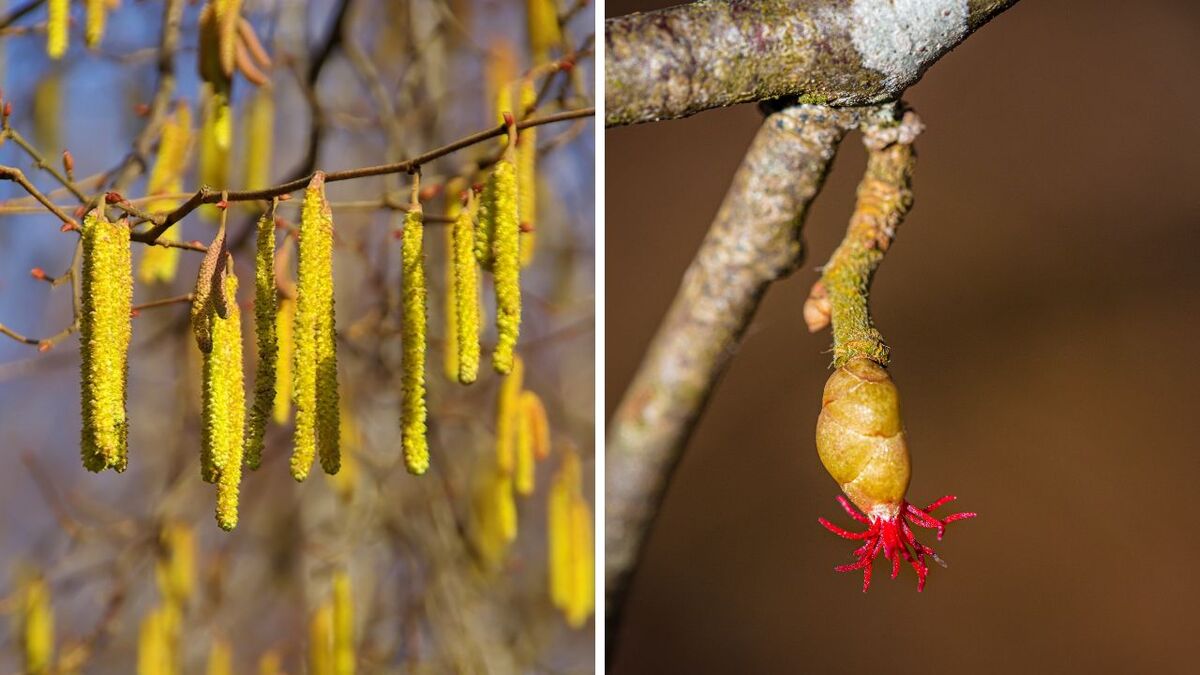
Where do you find the hazel?
It is widely distributed in Europe and is not picky:
- In hedges and at forest edges.
- In light deciduous and mixed forests.
- By streams and shores.
- Often on calcareous, nutrient-rich soils, but very adaptable.
The Bushcraft Wonder: Flexibility is Key!
Now we come to what makes the hazel so brilliant for us forest walkers, wilderness educators, and bushcrafters: its incredible flexibility!
Especially with the young, straight shoots that sprout from the stock (water shoots or stock shoots).
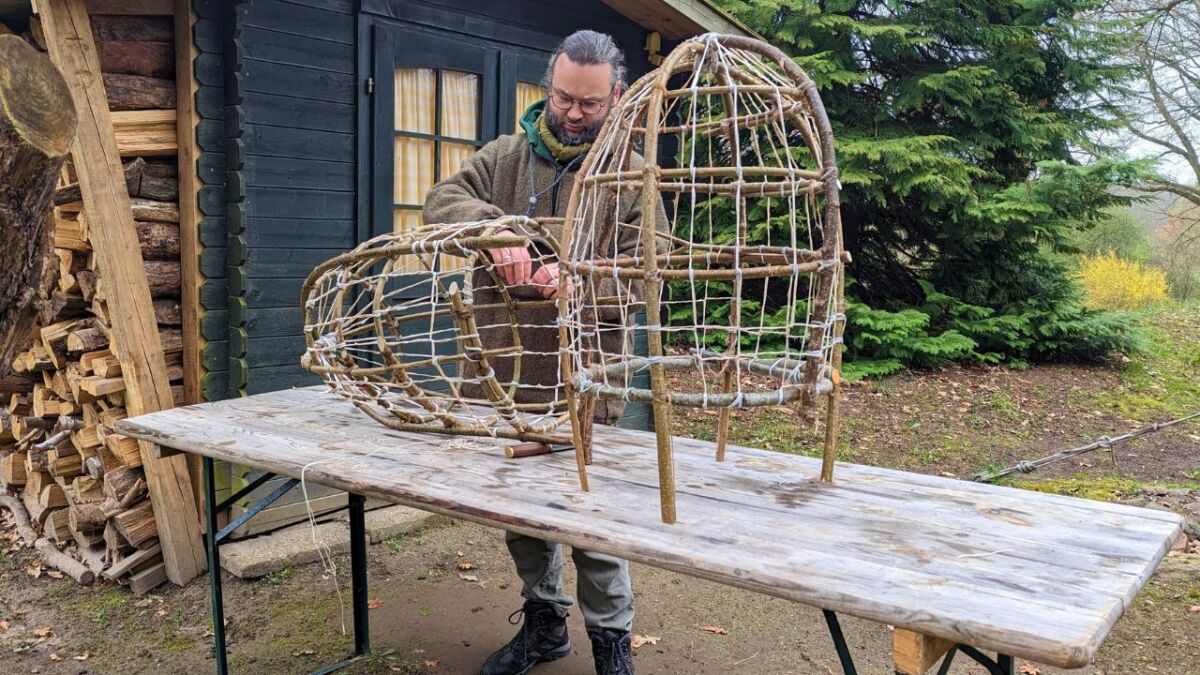
Weaving and Building: Your Natural Building Material
- Baskets & Carriers: This is THE showcase discipline! The long, flexible rods are perfect for weaving stable and lightweight carrying baskets, collection containers, or even simple backpacks. An essential skill for transporting gathered food or equipment.
- Fish Traps & Snares: The flexibility allows for the shaping of stable traps and snare parts (see my guide to fishing methods).
- Woven Walls & Barriers: For wind protection, fences, or the walls of simple shelters (leaf huts). The technique of weaving between thicker hazel posts is ancient.
- Shelter Construction: Flexible rods are excellent as a framework for simple emergency shelters (e.g., a "bender" or the skeleton of a leaf hut), over which leaves or tarps can be stretched.
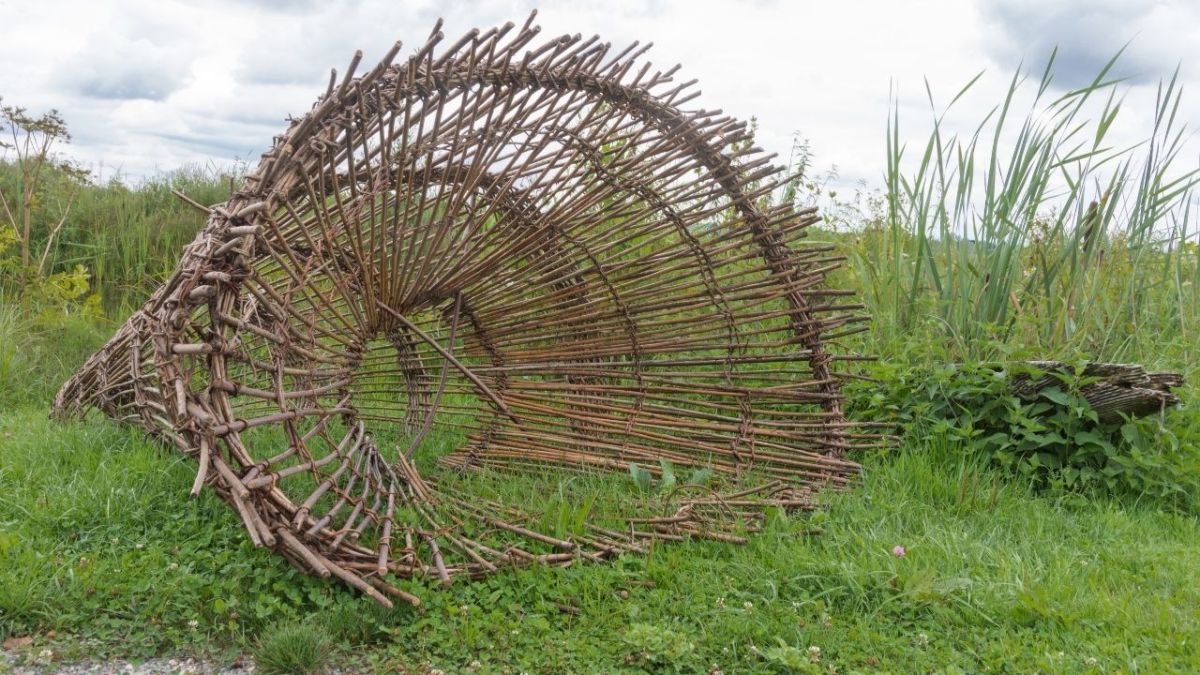
Tools & Helpers made of Hazelwood
- Fire Drilling (Bow Drill): Hazel is a good choice for both the spindle and the hearth board, as it is relatively soft and produces good friction for the ember. If you want to master the technique of fire drilling, hazel is a great wood for it (here you can find a detailed guide on fire drilling with the Bow Drill). It is not for nothing that it belongs to the woods that are particularly suitable for spindle and board, as you can read in this comparison.
- Digging Sticks & Throwing Sticks: Thicker, straight branches can be easily sharpened into useful tools.
- Grill & Roasting Skewers: Straight, peeled twigs are perfect for cooking food over the fire.
- Simple Bows: For children or as a practice bow for the basics of bow making, simple longbows can be made from suitable hazel saplings (no high-performance weapons!).
- Tool Handles & Hammers: Thicker branches are well suited for improvised tools, for example, to build a sturdy bushcraft wooden hammer.
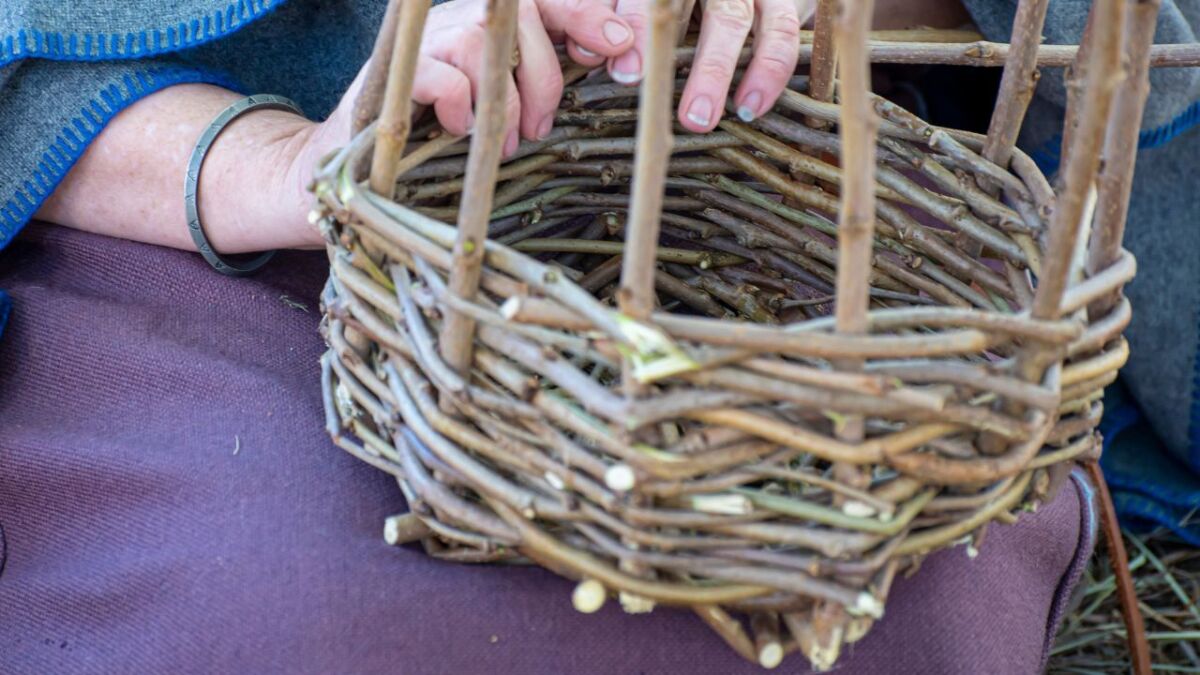
The Art of Harvesting: More than Just Cutting
To get the best flexible rods, winter (when the shrub is bare) is the ideal time.
Choose as straight, thumb-thick rods as possible without many side branches that often grow directly from the base of the bush (cane shoots).
Cut them off with a sharp knife or saw as deep as possible at the base – this promotes strong new growth next year, in line with the old "Coppicing" technique.
If you need to bend the rods very strongly right away, a short soaking can further increase flexibility. For many purposes, such as skewers or tool handles, you can also use them directly.
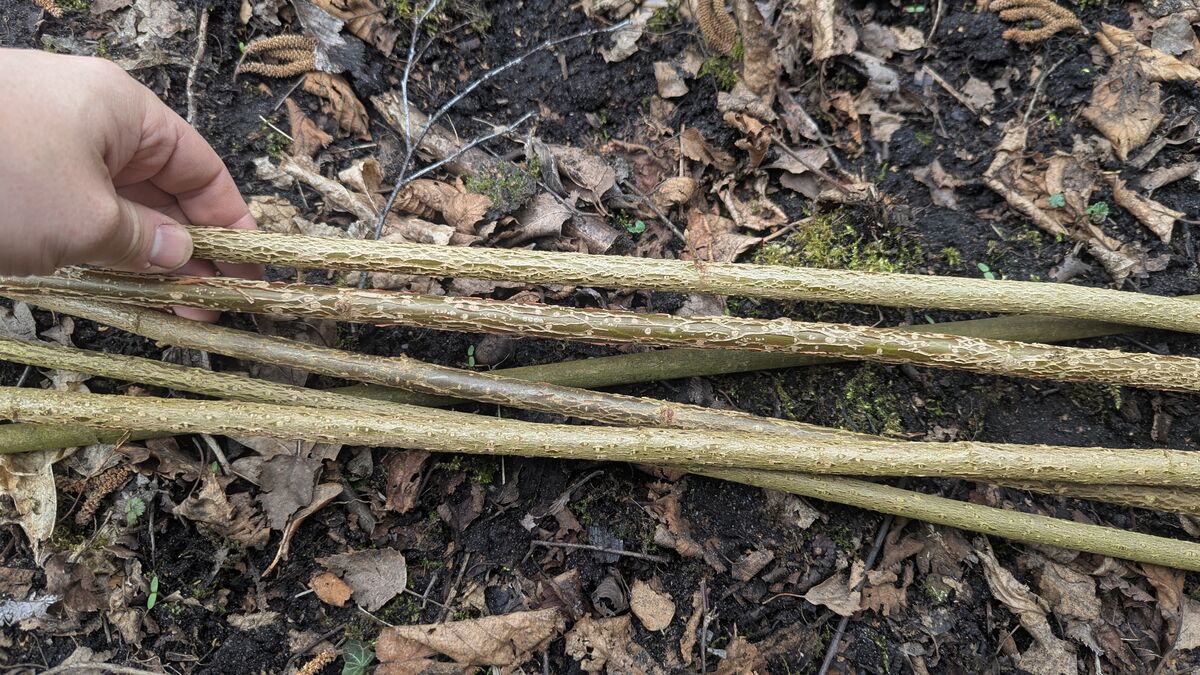
Survival with the Hazel: More than just wood
Of course, the hazel is also valuable in the direct survival context:
- The Hazelnut: The star! A powerhouse full of fat (up to 60%) and protein. Provides an incredible amount of energy in a small space. Can be well stored for the winter. The art is to find them before the squirrels and crack the hard shell! Hazelnuts are a top energy source and an important part of the emergency food from the forest that you should know about.
- Edible Catkins: In an emergency, the male catkins are edible. They are not very nutritious, but contain pollen (protein) and can be eaten raw or cooked. Better than nothing!
- Young Leaves: In spring, the very young, tender leaves can be eaten in small amounts raw in salads or cooked as emergency vegetables. Not a culinary highlight, but edible.
- Good Firewood: Hazel wood burns quite well and quickly when dry.
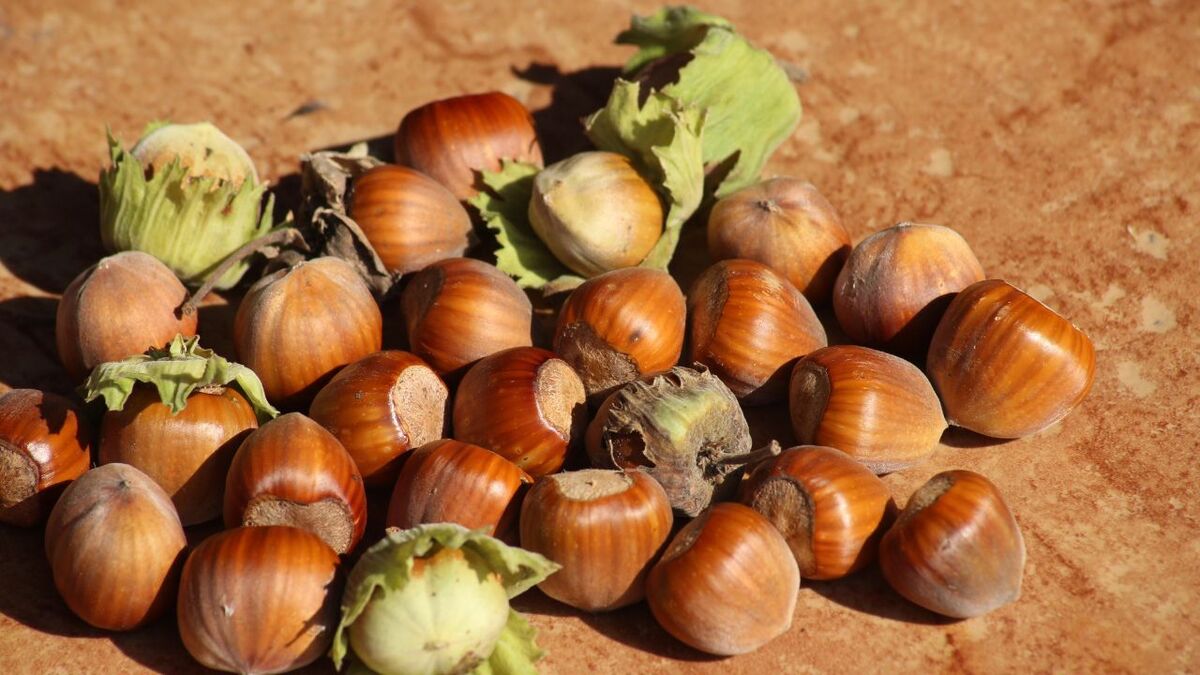
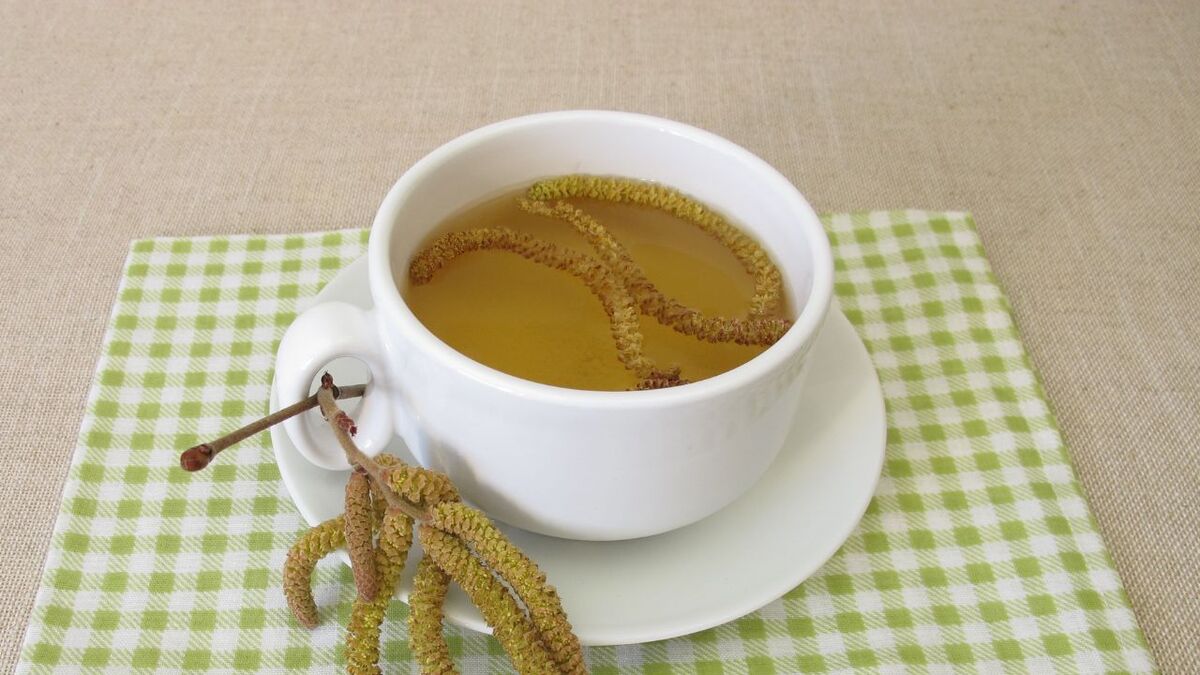
Mystical and Ancient Knowledge: The Hazel of Our Ancestors
The hazel was far more than just a useful shrub for our ancestors. It was considered sacred and was deeply rooted in mythology and customs:
- Wisdom & Knowledge: In Celtic mythology, the hazel was often a symbol of wisdom and hidden knowledge. The salmon of wisdom is said to have eaten hazelnuts that fell into the well of wisdom.
- Divining Rods & Divination: Hazel branches were the preferred material for divining rods to find water veins or mineral deposits. A practice that has survived to this day.
- Protection & Fertility: It was considered a protection against lightning strikes and evil spirits. Branches were placed in fields to promote fertility. It also played a role in traditional medicine, making it one of the fascinating healing trees of our homeland.
- Magic Wands: The classic "magic wand" in many fairy tales and legends is often made from hazel wood.
- Coppicing: Our ancestors utilized the hazel's ability to regrow vigorously after cutting for centuries. Through the regular practice of "coppicing" (cutting just above the ground), they sustainably harvested the sought-after flexible rods for fences, weaving, and firewood every few years. Many ancient forests still show traces of this management.
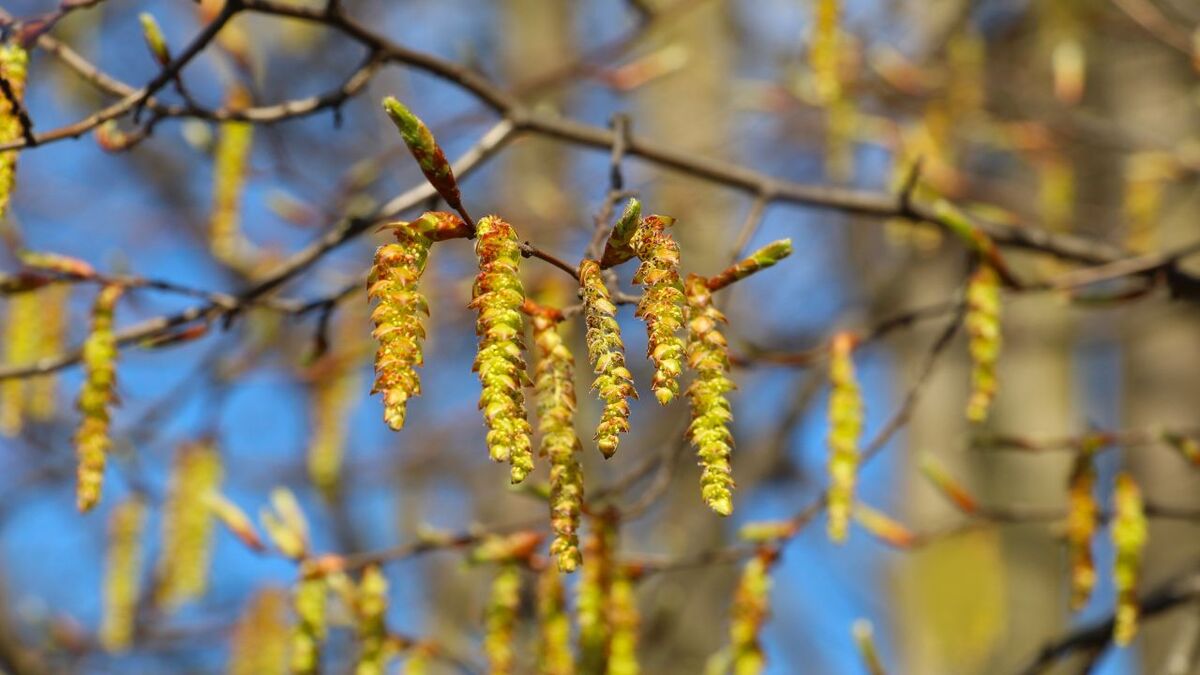
Harvesting with Respect: A Word on Sustainability
Just because the hazel is so useful, a respectful approach is important. Never harvest all the rods from a bush, and take only as much as you really need.
Remember that you require the owner's permission on someone else's land. By understanding the techniques of our ancestors (such as sustainable coppicing), we learn to utilize nature's gifts without exploiting them.
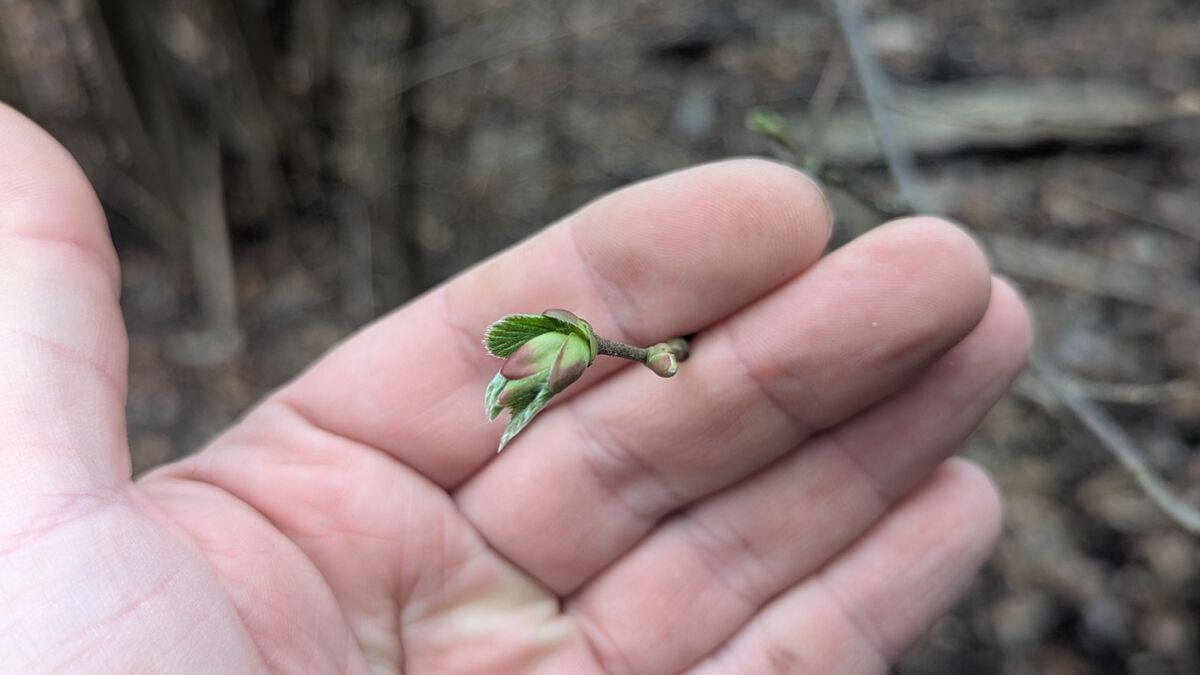
Conclusion: Your all-rounder right at your doorstep
The common hazel is a prime example of how much potential can be found in a single plant.
It not only provides us with energy-rich food — but above all — an unbeatable versatile material for countless bushcraft applications – from the vital fire spindle to the practical carrying basket. It connects us with ancient techniques and the knowledge of our ancestors.
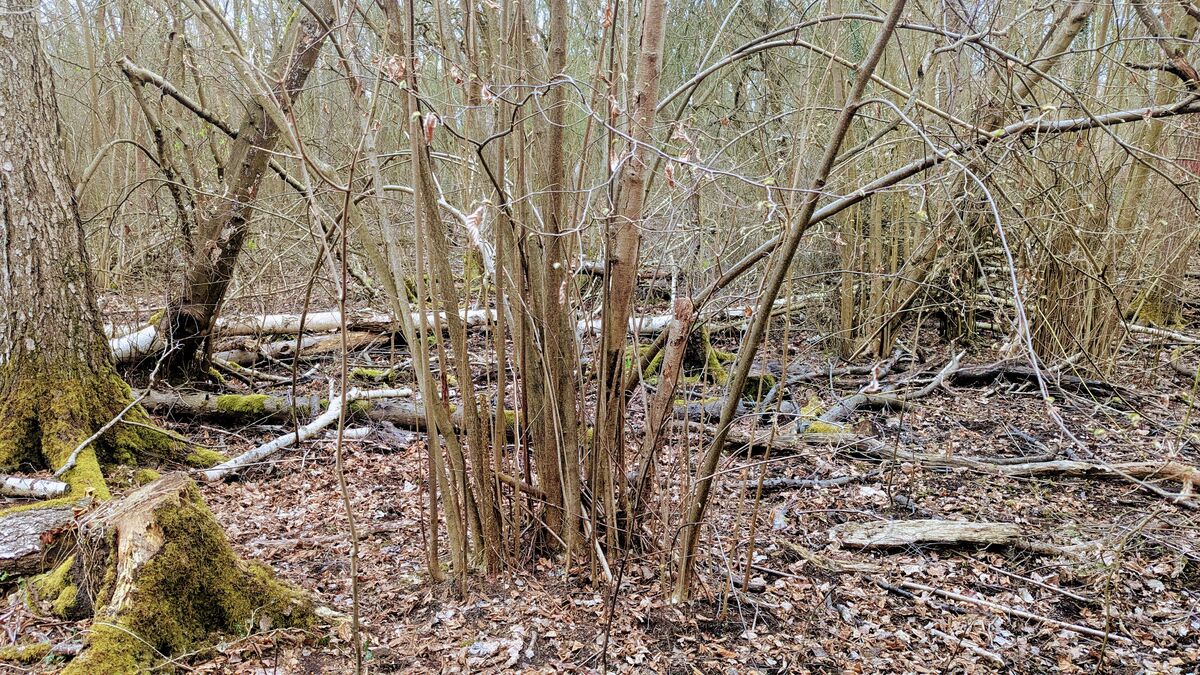
The Hazel as a Teacher: Skills Step by Step
Engaging with hazel is a great way to develop basic wilderness skills.
It begins with the precise observation (leaves, flowers, bark), leads to the understanding of the material (testing flexibility) to the practical application (carving, weaving, fire drilling) all the way to food procurement (collecting and cracking nuts).
Every step requires patience, practice, and sharpens our senses and our connection to nature.
Next time you pass by a hazel bush, look at it with different eyes. Recognize its features, feel the flexibility of its young shoots, and think about what you could make from it.
The hazel is a true friend in the wild – get to know and appreciate it!


Author of the guide
Martin Gebhardt
Hey, I'm Martin. On my blog, you will learn the basics and numerous details about living in the wild. I think survival, bushcraft and the good life in nature are the keys to happiness. Find me here on Instagram or on YouTube. You can find more about my mission on the About Me page.
Was this guide helpful?
15 people found this guide helpful.
5.00 out of 5 points (15 Ratings)
Comments (0)
This post may contain affiliate links. So if you click on the links and make a purchase, I will receive a small commission at no additional cost to you. Click here, to learn more about it.


